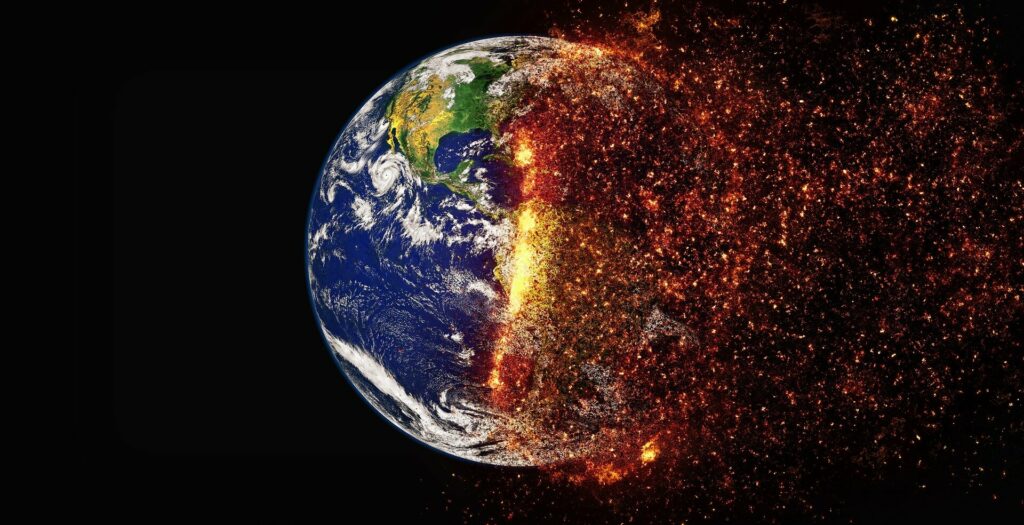In this week’s installment of our series on the Clintel Analysis of the IPCC’s 6th Assessment Report we look at Kip Hansen’s chapter on sea levels. The IPCC claims that global sea levels rose in a linear fashion from preindustrial times until a couple of decades ago and then sped up, meaning the oceans are surging upward ever faster and we’re all going to drown, starting with the billionaires in their coastal mansions. But so often with the IPCC, the spot in the graph where the slope changes just happens to coincide with the place where they switched to a different way of measuring. Bill Gates should be safe from drowning for a while yet.
Hansen notes that sea level rise over the past 200 years is consistent with the recovery from the Little Ice Age. As the planet cooled after the Medieval Warm Period the spread of glaciers and snow on land depleted the oceans. But once the land started warming again glacial runoff contributed to rising sea levels.
How do we know? To measure sea levels nowadays we rely on a global network of tide gauges but only a few of them provide data more than a century back. The general estimate is that according to tide gauges, sea levels rose about 20 cm over the 20th century, at a rate of about 1.7 mm/yr.
Tide gauges measure the position of the sea relative to land and then try to adjust for the vertical movement of the land, the latter a slow and universal but not uniform phenomenon along coast lines. In some places it’s falling and in others rising. Besides, not all tide gauges have reference stations to detect land movement, so again the sample is incomplete.
Starting in 1993 scientists were able to measure sea level using satellites. But the satellite record is a different concept with the usual stacked modeling hypotheticals standing between the raw data and the conclusion. It estimates the global ocean volume and then translates that into an estimate of what the sea level would be if the entire ocean were in a single basin. The satellite record since 1993 reports a rise at a rate of 3.4 mm/year. Comparing the satellite record to the tide gauge record implies an acceleration.
The IPCC also claims that acceleration has been found in the longest tide gauge records too. But as Hansen notes, that assertion is not quite right. There are five such reconstructions. One reported no acceleration, and another reported an acceleration of only 2/1000ths of a mm/yr/yr which, on a graph, is barely distinguishable from no acceleration.
Rather than looking at the sea level graph itself, Hansen turns to a graph of sea level acceleration rates by Willis Eschenbach which shows that the rate of sea level rise across the tide gauge record has never been constant. It was high around 1900, slowed until the 1930s, rose during the 1940s, slowed until 1980 and has risen since, but not to the same rate as it was in 1940. Given this pattern, when the IPCC compares the rate of sea level rise over the past 20 years to the rate over the previous 100 years, they are making an invalid comparison because the calculation over the long interval smooths out variations that were there. (Steven Koonin made this same point in his book Unsettled and most alarmists ignored this inconvenient truth there too.)
Finally, Hansen surveys the numbers on the actual sea level increase as experienced by people along coast lines and shows that it remains so small it is largely ignored. He concludes:
“Mankind’s ports, cities, and seashores have thrived despite the sea level rise of the last century, which in many cases has been ignored. That same slow and steady aspect of global sea level rise and continuing advances in technology make adaptation to future sea level rise eminently possible.”
We’ll start believing there’s a sea level crisis when the activists and their wealthy funders stop flocking to the shores to build their luxury homes.



"We’ll start believing there’s a sea level crisis when the activists and their wealthy funders stop flocking to the shores to build their luxury homes."
Hear, hear! Hear, hear! When Gates and O'Bozo start moving to higher ground I'll believe it. Of course I live at over 700 feet above MSL so I don't really have to worry about a couple of feet of sea level rise. Also there is excellent science that things are going to start getting cold beginning around 2030 which will result in FALLING sea levels. I guess the folks in the Maldives are safe for a while yet. 😉
"The general estimate is that according to tide gauges, sea levels rose about 20 cm over the 20th century".
Sea level rise is dwarfed by tidal ranges, i.e. the difference betweeen high tide and low tide, which tends to be around 2 to 3 metres (200 to 300 cm) on a worldwide basis. I doubt that anyone, anywhwere has even noticed this 20 cm sea level rise on a practical, day-to-day basis.
What has also been discussed often at CDN is that sea level rise was much much faster in the several thousands of years after the last ice age ended.Actually been levelling off in more recent times.3mm a year rise is nothing compared to what it was say 7 or 8 thousand years ago.No smokestacks or SUV's back then.